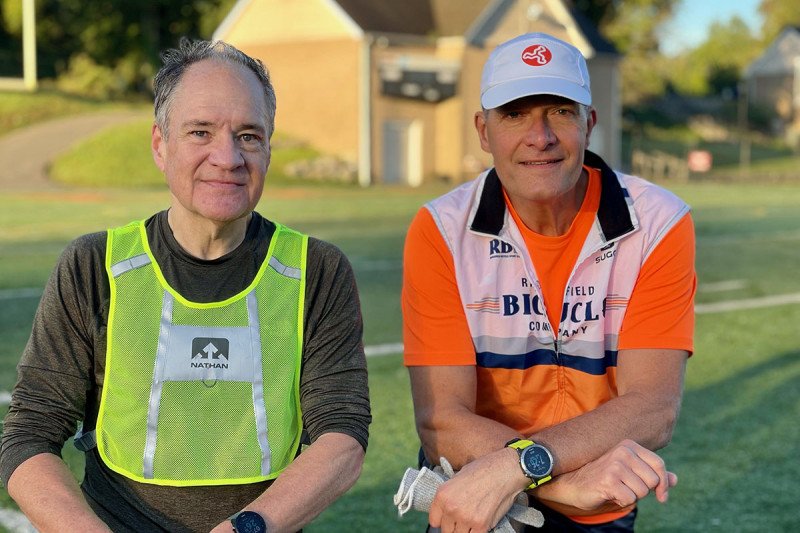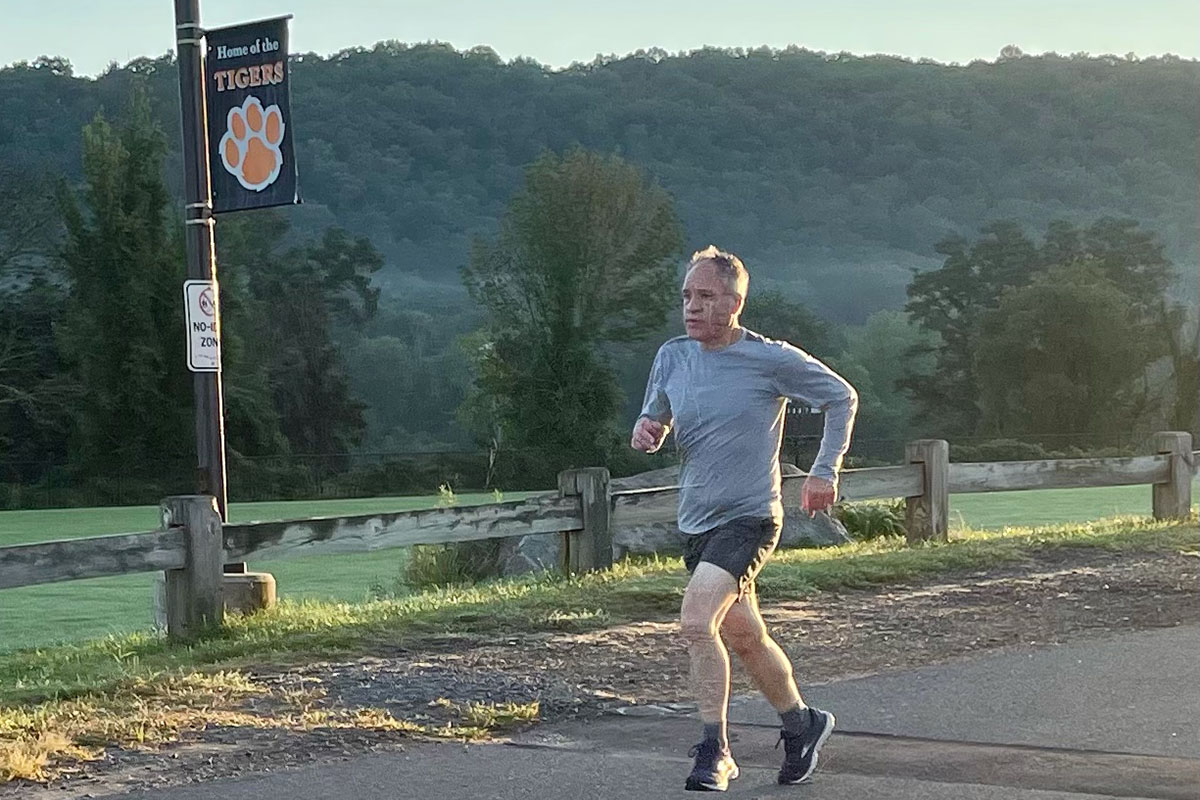
Urologist Behfar Ehdaie believes that active surveillance is a viable option for many patients with prostate cancer. He feels so strongly about this idea that several years ago, he sought out negotiation experts from Harvard Business School and asked to learn techniques he could use to communicate the appropriateness of this choice with patients and their families.
Active surveillance for prostate cancer at Memorial Sloan Kettering Cancer Center doesn’t mean doing nothing at all. Instead, it means following a specific protocol based on years of research.
“Active surveillance is the recommended plan for select men with low-grade prostate cancer,” Dr. Ehdaie explains. “Its purpose is to preserve the patient’s quality of life, monitor their cancer, and then, if there are changes to the tumor, intervene when we are still within the window of cure.”
More than 90% of men seen at MSK who qualify for active surveillance choose this option. By comparison, the rate of men nationally who choose active surveillance over immediate treatment is only about 55%.
A Protocol Based on Years of Research
In 2018, then-56-year-old Bobby Logan learned he might have prostate cancer after a blood test at a routine physical revealed an elevated prostate specific antigen (PSA) score. A few years earlier, Bobby’s father had received a prostate cancer diagnosis. His father chose to have proton therapy at a hospital in Florida and is now doing well.
Bobby’s first stop after getting his PSA results was a local urologist near his home in Danbury, Connecticut. Based on Bobby’s family history, the doctor wanted to do a biopsy right away, but Bobby wanted to take things more slowly. He remembered learning about active surveillance when going to appointments with his father. He started doing research on experts in active surveillance even before he knew for sure whether he had cancer. He was worried about the side effects from treatment that might not be necessary.
More than 90% of men seen at MSK who qualify for active surveillance choose this option.
His research led him to Dr. Ehdaie and the work of MSK’s Urology Service under the leadership of James Eastham. At his first appointment, Bobby learned about MSK’s stepwise process for diagnosing prostate cancer: first blood tests and a physical exam, then an MRI, and then an image-guided needle biopsy — only if something suspicious was found.
Tests revealed that Bobby did have cancer, but it was slow-growing. He began the active surveillance protocol:
- a PSA test every six months
- an MRI every 18 months
- a biopsy every three years
He was able to have some of his appointments at MSK Westchester, near his home.
Treating the Anxiety — Not the Cancer
Unlike Bobby, some patients are not sure they want to avoid treatment, even if they can do so safely. Christian Nelson, Chief of the Psychiatry Service in MSK’s Department of Psychiatry and Behavioral Sciences, studies the anxious feelings surrounding active surveillance and why it is so difficult for some people to accept the fact that it’s better for cancer to remain in their bodies.
Dr. Nelson recently completed a study that found men who score higher on tests to detect anxiety and depression are more likely to choose treatment than active surveillance. “Just hearing the word cancer is obviously scary and anxiety-provoking,” he says. “It’s important to understand how these feelings affect the decision-making process. For patients who have a lot of anxiety, there are many ways to reduce it.”
Dr. Eastham points out that treatment for prostate cancer can have a lot of side effects, including changes in bladder, bowel, and sexual function. “I like to say, only half-joking, that having radiation or surgery is not the best treatment for anxiety,” he notes.
Finding a Friend Who Understands
Unfortunately, in March 2021, Bobby’s three-year biopsy revealed that although his cancer was still small and confined to the prostate, the grade had increased. He would need treatment. He met with MSK radiation oncologists and proton therapy experts to learn about his treatment options but decided to have surgery with Dr. Ehdaie.
“Because Dr. Ehdaie is such a strong believer in active surveillance, when he told me I needed treatment I knew I could trust his judgment,” Bobby says. “To me, it gave him more credibility.”
When Bobby was reading about where to go for prostate cancer treatment, he was inspired by a story on MSK’s website about Mike Rodgers, a marathon runner and triathlete diagnosed with prostate cancer who’d had surgery with Dr. Ehdaie. Bobby reached out to Mike to learn more about his experience. It turned out that the two lived near each other, and Mike invited Bobby to join his Tuesday morning track club. They became good friends.
Before his surgery, Bobby was already an active runner and in good shape. However, once he knew that he would need treatment, he ramped up his workouts. He ran multiple half-marathons and other races to get out of his comfort zone. “I called it ‘pre-hab,’” he says. “I knew that surgery would be really hard on my body, so I wanted to be prepared.” A month before surgery, at Mike’s suggestion, he transitioned from running to focusing on adding muscle and working on his core.

Feeling “Ecstatic” after a Successful Surgery
On July 27, Dr. Ehdaie performed Bobby’s robotic surgery at MSK’s Josie Robertson Surgery Center. Within hours, Bobby was walking laps around the floor. He was ready to go back to work after only a few days, but his wife insisted that he wait a little longer. Within two weeks, though, he was back at his office running his courier company.
He also headed back to the track almost immediately, walking with trekking poles until he felt stronger. On Bobby’s 60th birthday, six weeks after his surgery, he met his track club at , and they ran six miles together. Five days later, he ran a ten-mile race, finishing fourth in his age division and in the top 25% overall.
Dr. Ehdaie points out that Bobby’s recovery has been unusually fast, and explains that every patient’s recovery is different. “Bobby is the poster child for active surveillance, because he’s seen both sides of it,” he adds. “He was able to delay treatment for many years, and then when his cancer changed, we were able to offer him a successful surgery.”
“I have so much energy now, and almost no pain. I’m ecstatic,” Bobby says. “The side effects that I feared were minimal and short lasting.” At his follow-up appointment, Bobby learned that his PSA level was undetectable. He was cancer free. He is already back to training for several races in October and November.
- MSK is a leader in developing protocols for active surveillance in prostate cancer.
- Many people with low-grade, slow-growing cancer may be able to avoid treatment.
- Active surveillance allows patients to avoid the potential side effects of treatment.






